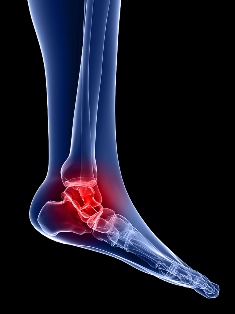Health Blog
Guidelines: Diagnosing and Treating Adhesive Capsulitis of the Ankle

Condition not regarded as common, literature is lacking
Adhesive capsulitis is a broad term that's often used as a synonym for frozen shoulder; however, the condition is not limited to the shoulder and can also affect the hip, wrist or ankle. The connection between adhesive capsulitis and the shoulder exists because it occurs in that location most frequently, but patients with the condition in the ankle can suffer just as much, if not more, and require sufficient rehabilitative attention. Unfortunately, there is minimal literature on adhesive capsulitis of the ankle (ACA), or frozen ankle, with most evidence being lower-level case reports and requiring more powerful reviews and guidelines. Taking note of this, a team clinical reviewed ACA, including diagnostic criteria and current treatment modalities, to help physical therapists and other physicians better deal with the condition.
Understanding frozen shoulder helps understanding frozen ankle
Since adhesive capsulitis of the shoulder (ACS) is better documented than ACA, the team first explained ACS to help create a clearer picture of ACA. ACS causes pain and restrictions during both active and passive range of motion (ROM), and the motion loss is global, with external rotation usually being the first affected, followed by abduction and finally internal rotation. ACS can be categorized as either primary (a.k.a idiopathic) or secondary, with primary occurring without any underlying cause and secondary coming due to other causative factors. ACA can also occur either idiopathically or secondarily, but most cases are secondary to trauma like ankle fractures or sprains. Like ACS, ACA doesn't only affect the site of the injury, but it also disturbs the entire joint capsule, resulting in a global loss of joint ROM.
Diagnosing and treating ACA
While no clinical criteria currently exist for diagnosing ACA, available literature does point out some similarities in ACS patients and can be applied to the ankle. Patients who are diagnosed for ACA usually complain of ankle pain, swelling and difficulty walking, and symptoms can arise anywhere from immediately after an incident to weeks later. When significant deficits in ankle ROM first show themselves, further investigation is necessary to determine if ACA is present. Simple ankle dorsiflexion and plantarflexion tests are effective in helping diagnosis, and though radiographic arthrograms are the standard for definitive diagnosis, their use is limited due to their invasive nature. After diagnosis is confirmed, the best current treatment option for ACA that has been proven effective is physical therapy focused on active and passive ROM, as well as ankle joint mobilization techniques. Only when conservative care fails should arthrography and possibly arthroscopic debridement be necessary. Most importantly, further studies are needed to properly treat ACA once it's recognized, with better treatment protocols that can help not only identify the phases of this condition early on, but allow effective and efficient evidence-based treatment in the hopes of preventing unnecessary disability.
-As reported in the Oct. '11 edition of International Foot & Ankle Foundation
March 8, 2012
Back to Health BlogHEALTH BLOG
- A Personalized Physical Therapy Program Can Assist with Whiplash
- Why Older Adults Should Incorporate an Exercise Program
- After an Achilles Injury, Physical Therapists Can Help with Recovery
- AI Can Answer Questions But It’s Best to See a Physical Therapist
- Physical Therapy Can Help With Symptoms of Wryneck
- Reduce the Risk of Pickleball Fractures By Taking Proper Precautions
- Physical Activity May Slow the Progression of Parkinson's Disease
- Too Much Salt in Your Diet? Learn the Dangers of High Sodium Intake
- Suffer From Lower Back Pain? Might Be Time to Take A Break
- The Road to Recovery: Preventing Re-Injury After ACL Surgery
RECENT ARTICLES

- 11 Possible Reasons Your Back HurtsJune 22, 2020

- What Conditions Can a Chiropractor Treat?May 25, 2020

- A Simple Guide to Better PostureApril 30, 2020

- Is Acupuncture Right for Me When I’m Afraid of Needles?March 30, 2020

- Stretching Done Right — How and When to StretchFebruary 26, 2020

